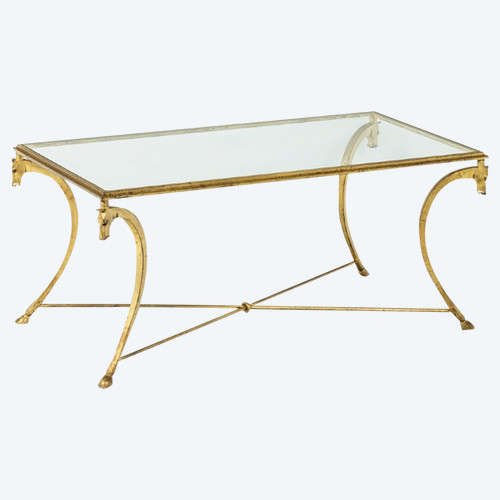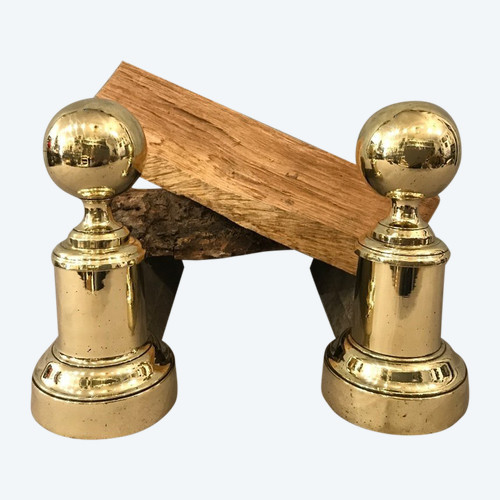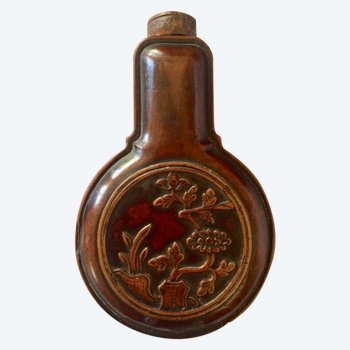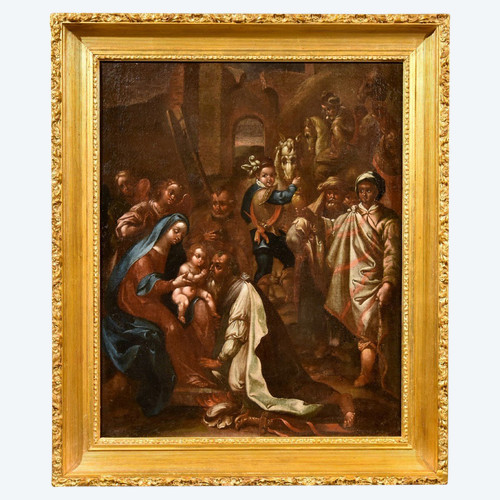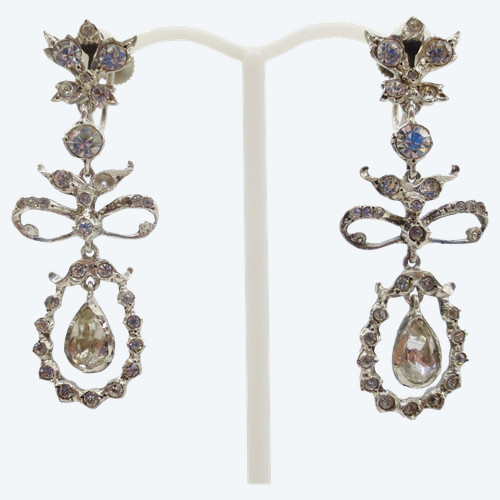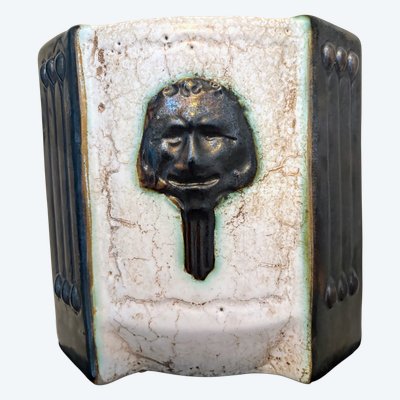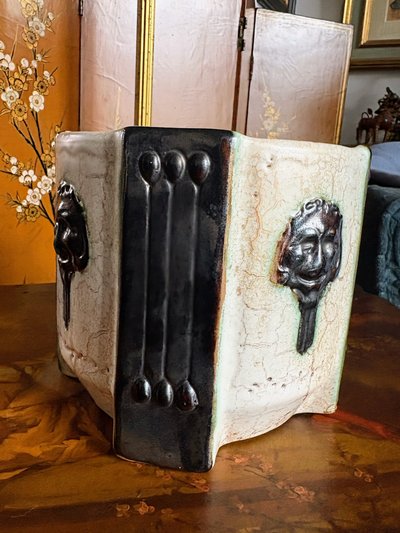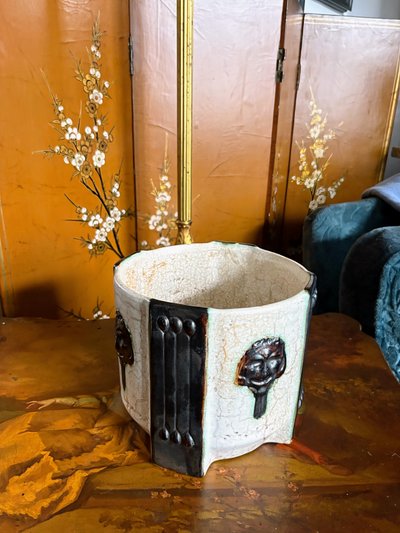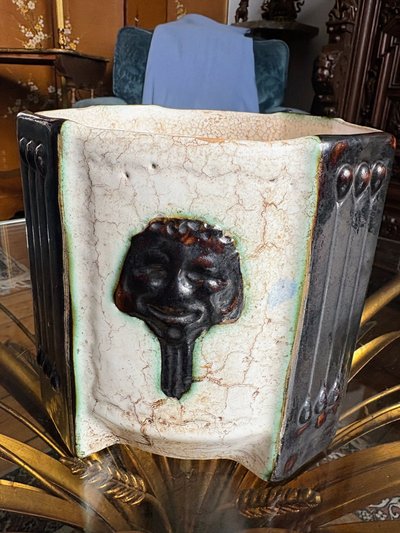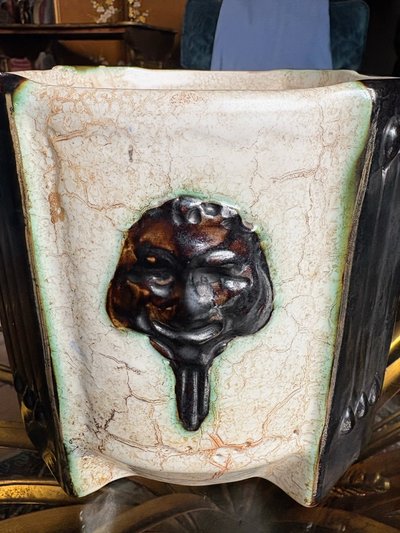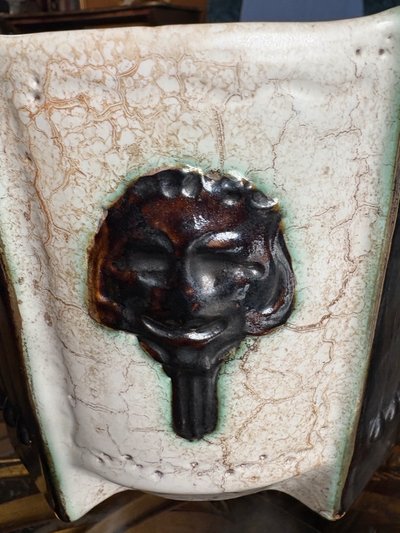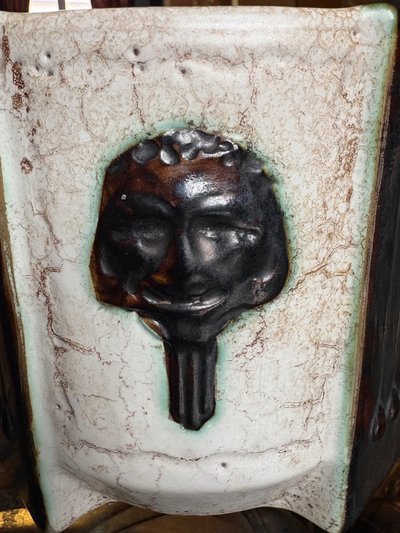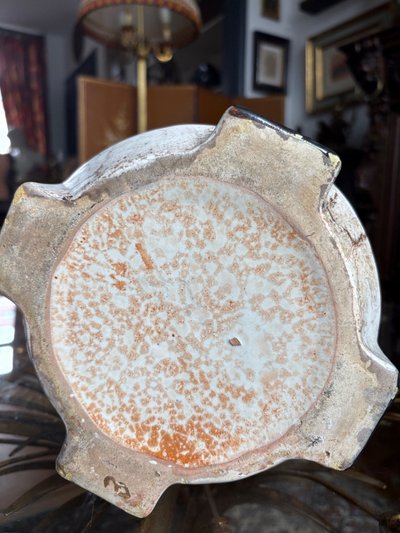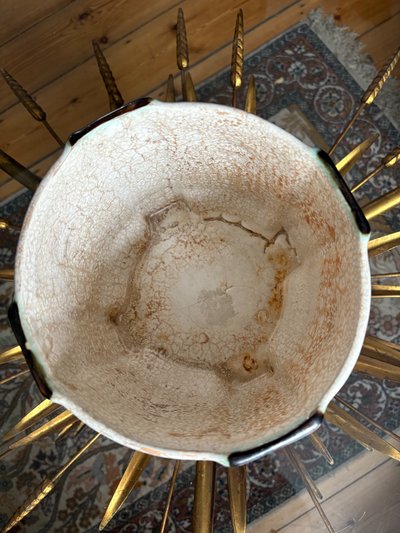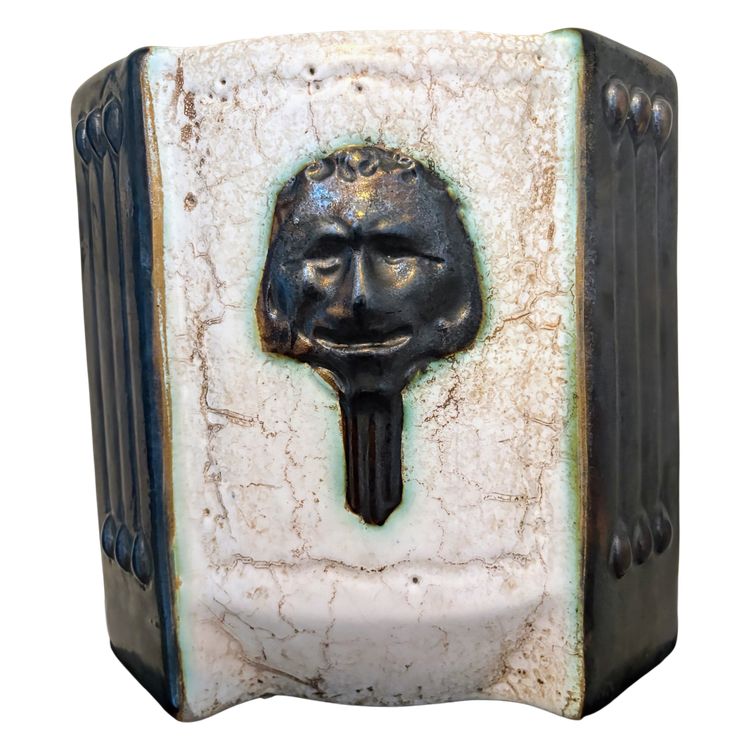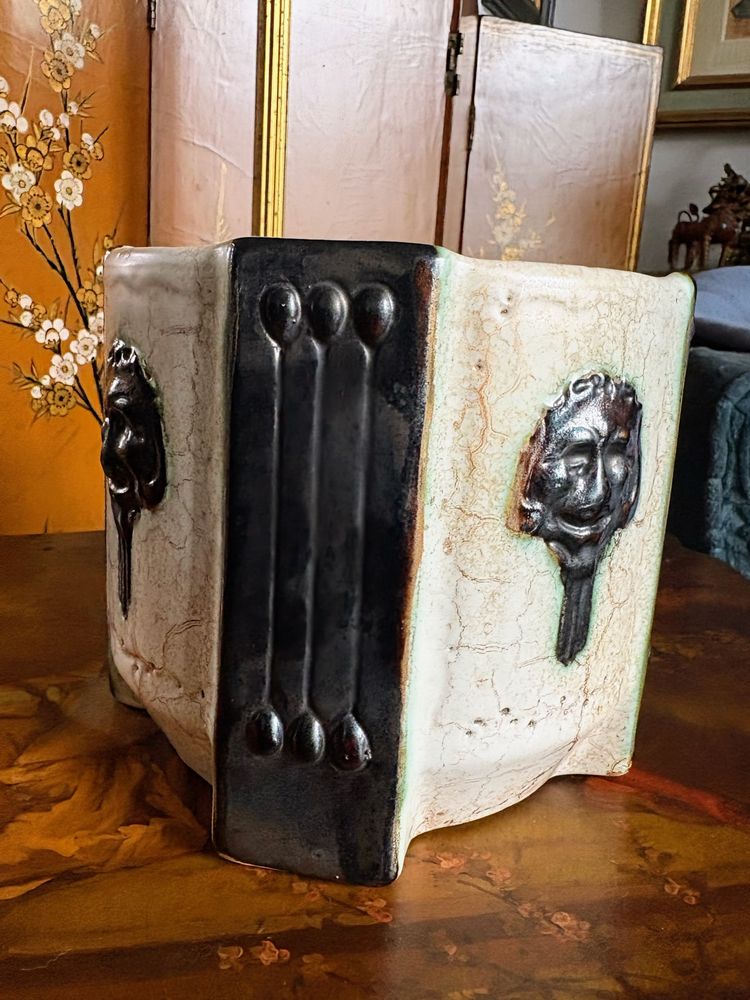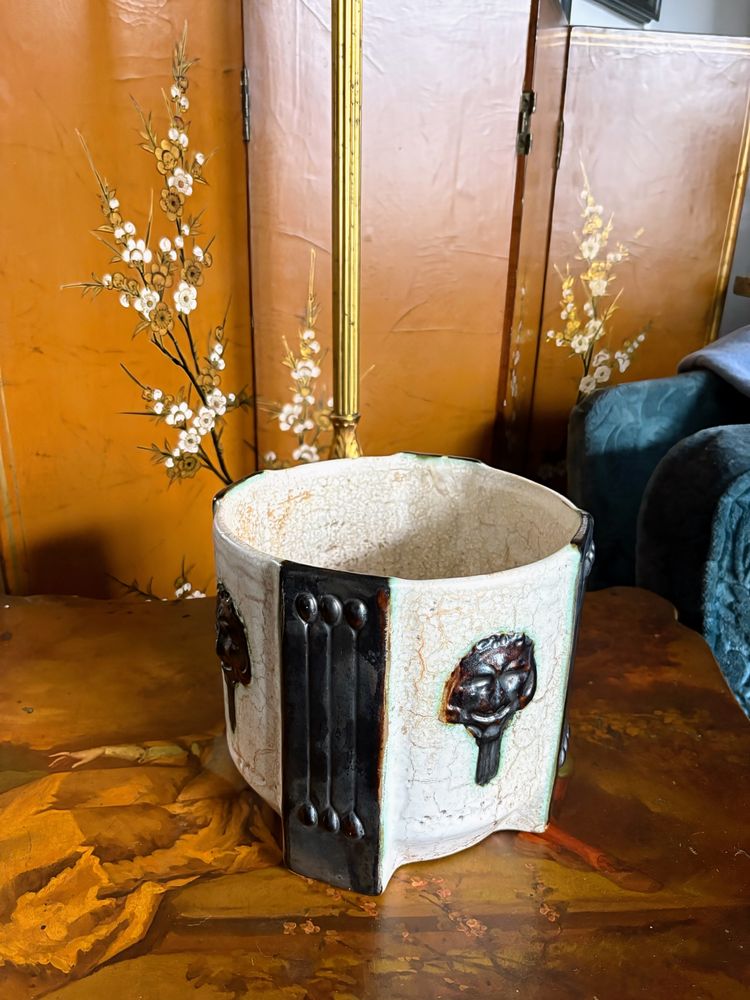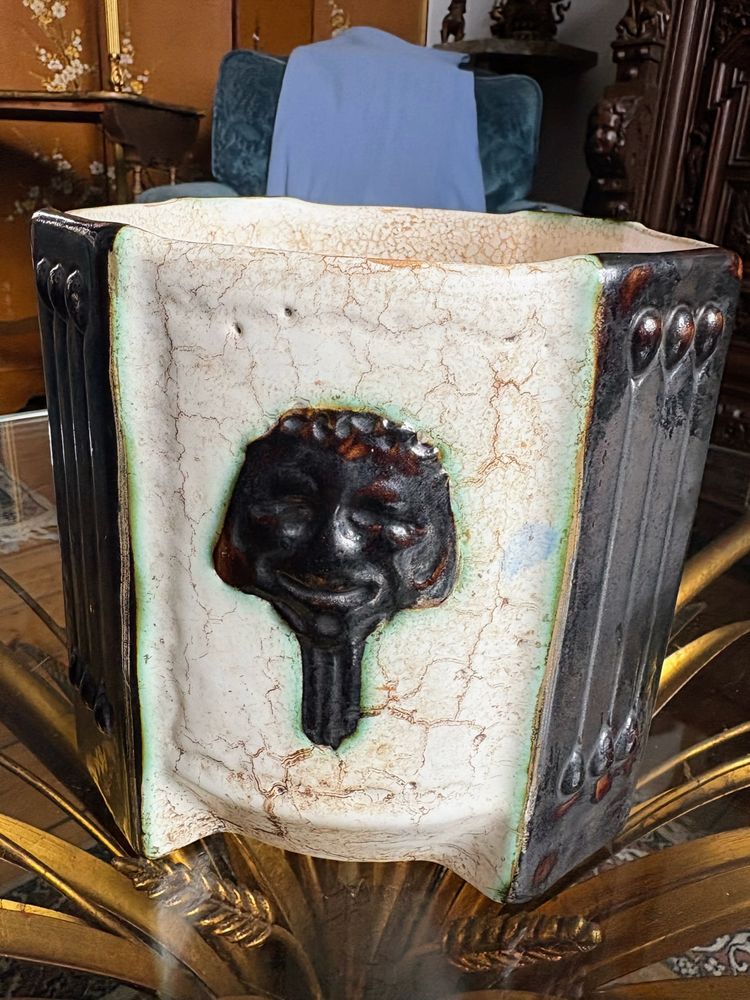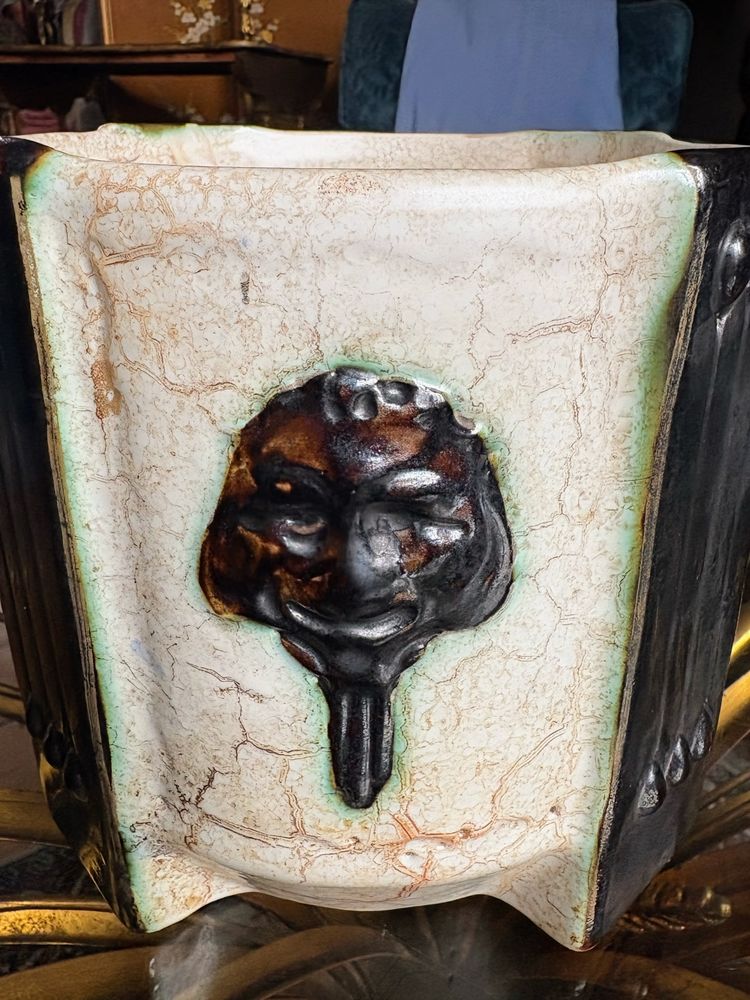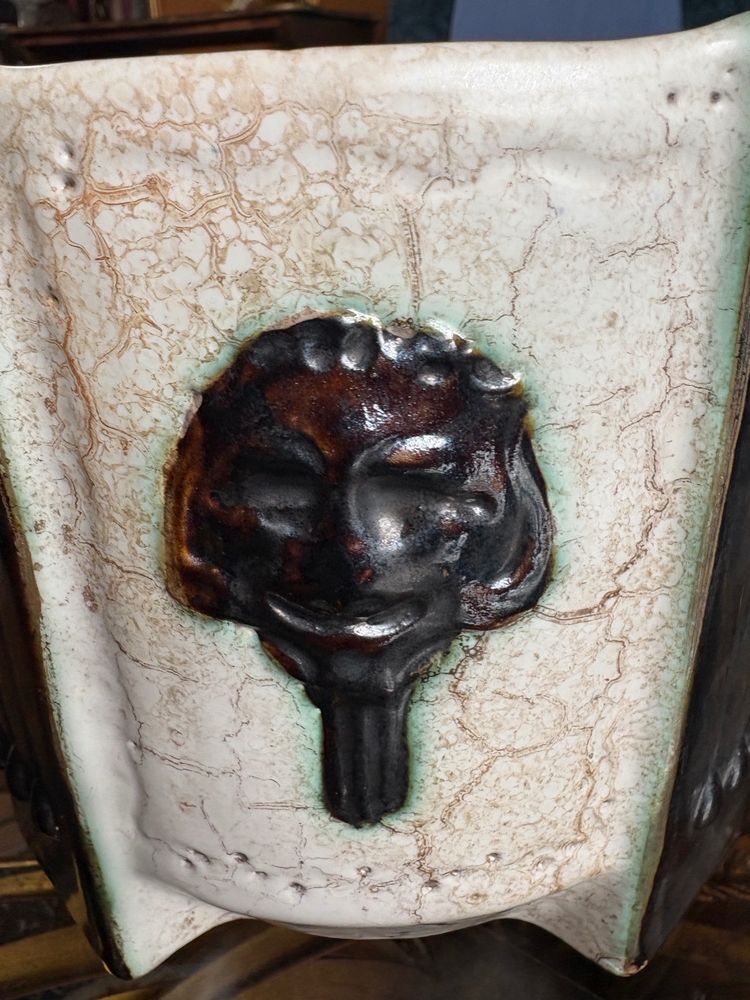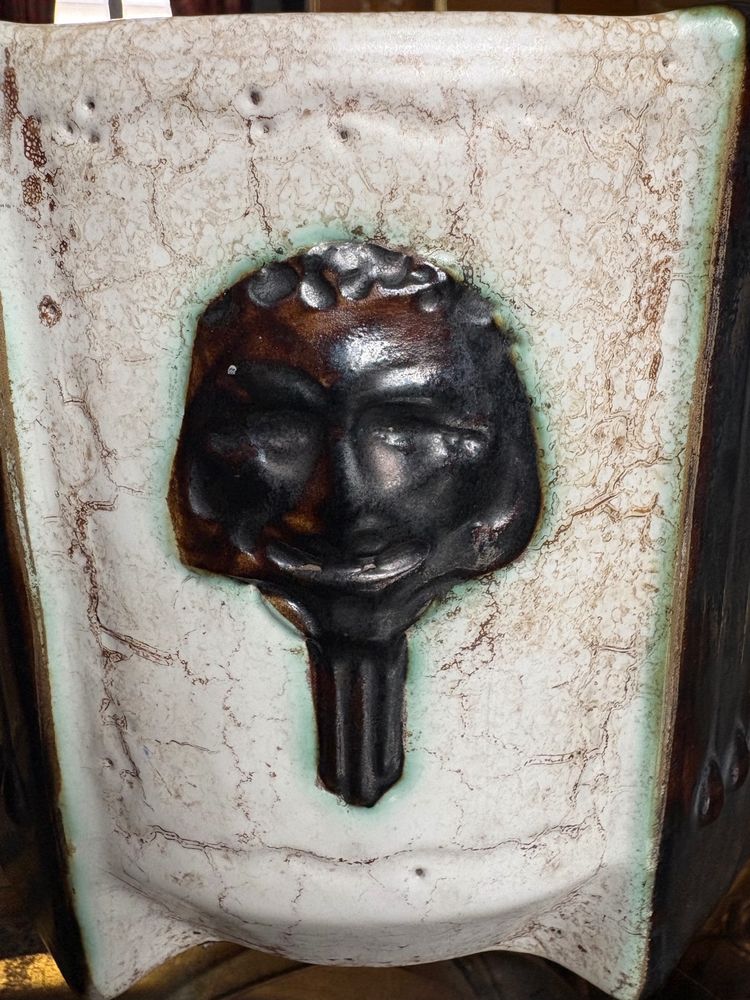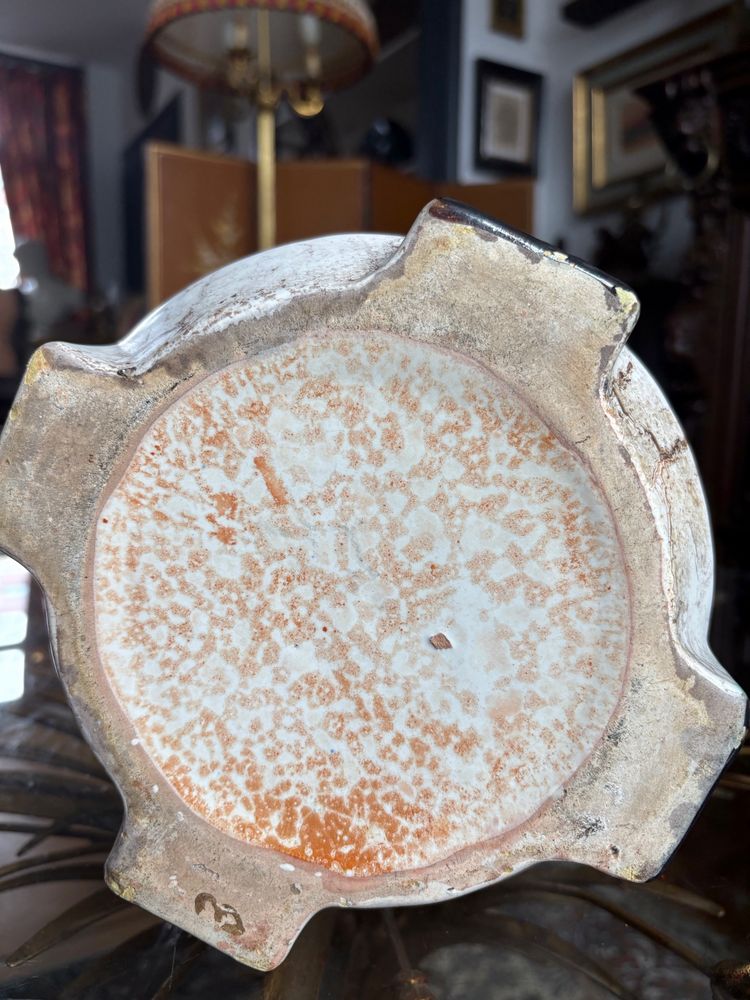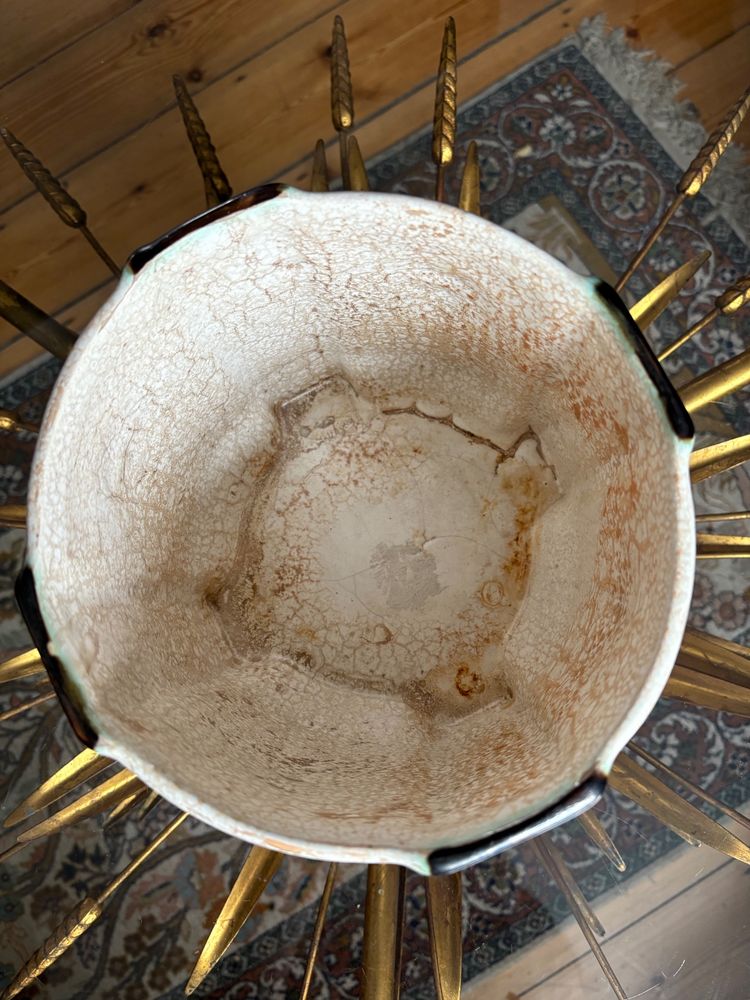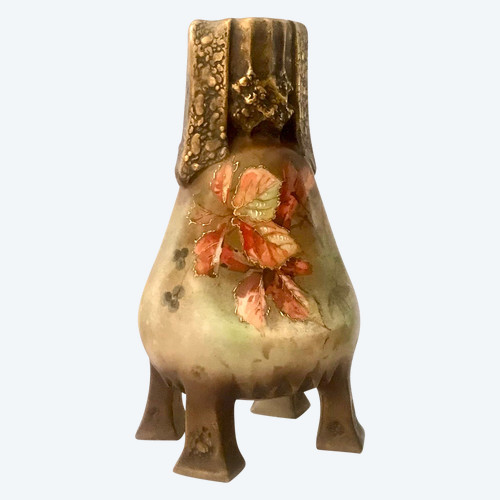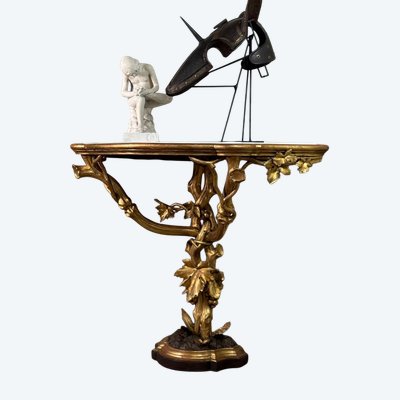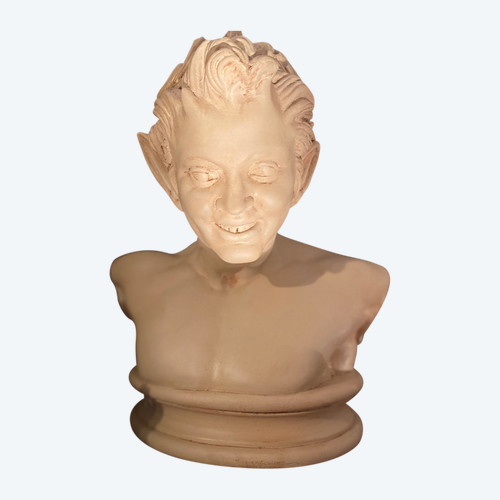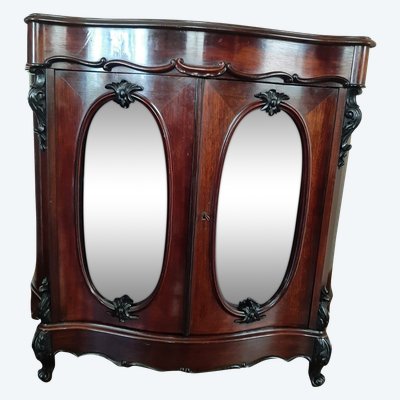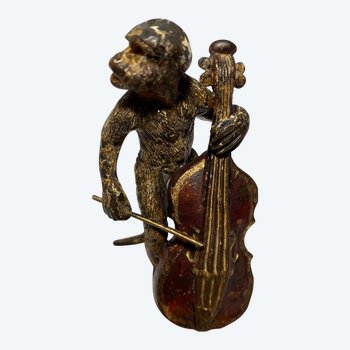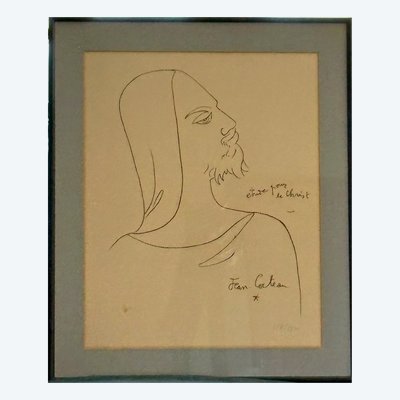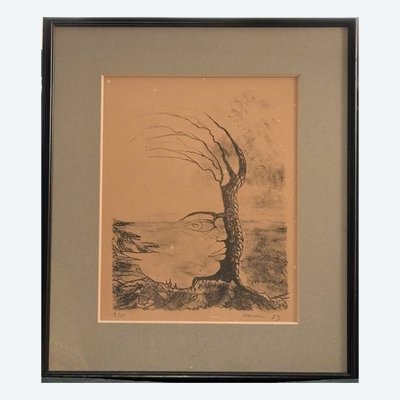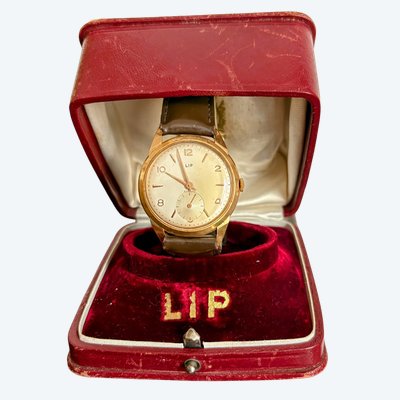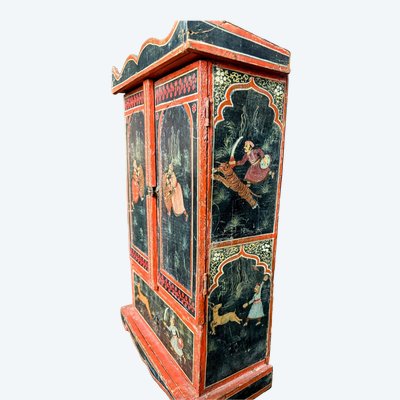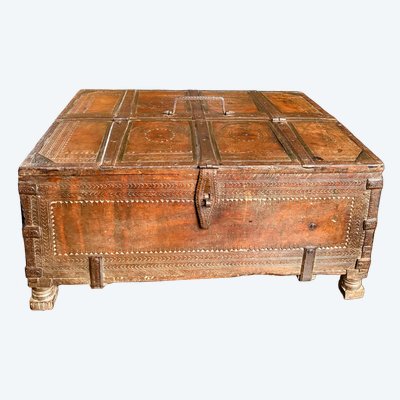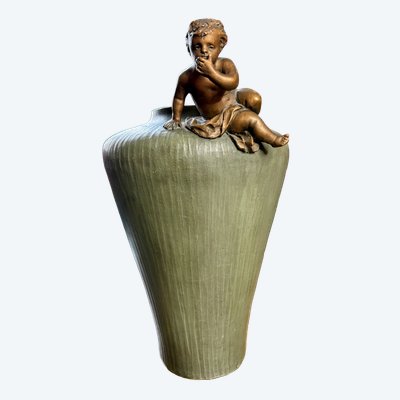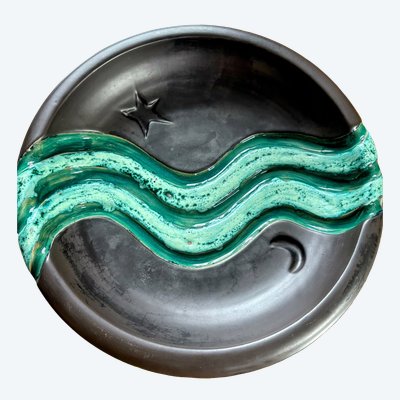This description has been translated and may not be completely accurate. Click here to see the original
Crackled glazed earthenware with relief decoration - Esoteric art, late 19th century
An unusual glazed earthenware cachepot with an almost architectural silhouette, evoking a votive column. Its four sides feature masks, modeled in relief, as if emerging from a dream or forgotten ritual.
The ivory background, with its expressive craquelé pattern, is framed by high-relief panels in dark, nuanced hues, oscillating between black, brown and celadon green, with a lively patina. The material seems to breathe. The heads, closing their eyes in an enigmatic expression, recall the ghostly figures of ancient theater, or the mediumistic faces dear to the spiritualist movement that swept through fin-de-siècle Mitteleuropa.
Made in Vienna around 1880, this piece is part of the Symbolist and mystical aesthetic of the turn-of-the-century, where Art blends with the occult sciences, Rosicrucian circles and the call of an inhabited invisible.
In a wabi-sabi interior or on an artist's console, it becomes a sculpture in its own right. In a more esoteric setting, it can hold a sacred plant or personal papers, or remain empty, like an urn of silence.
A rare and almost disturbingly poetic object, it is a vestige of a world where souls and energies were questioned. It carries a discreet magnetism, at the crossroads of the visible and the invisible. A vestige of a troubled and fascinating era, this cachepot is a fragment of the invisible.
It could have taken pride of place in the wood-panelled living room of a Ringstrasse spiritualist doctor, alongside a crystal pendulum and Ouija board, to house the plants that warded off dark spirits.
Dimensions: Height 16.5 cm - Diameter 18 cm
Ref: 31CJZZ1OZW

